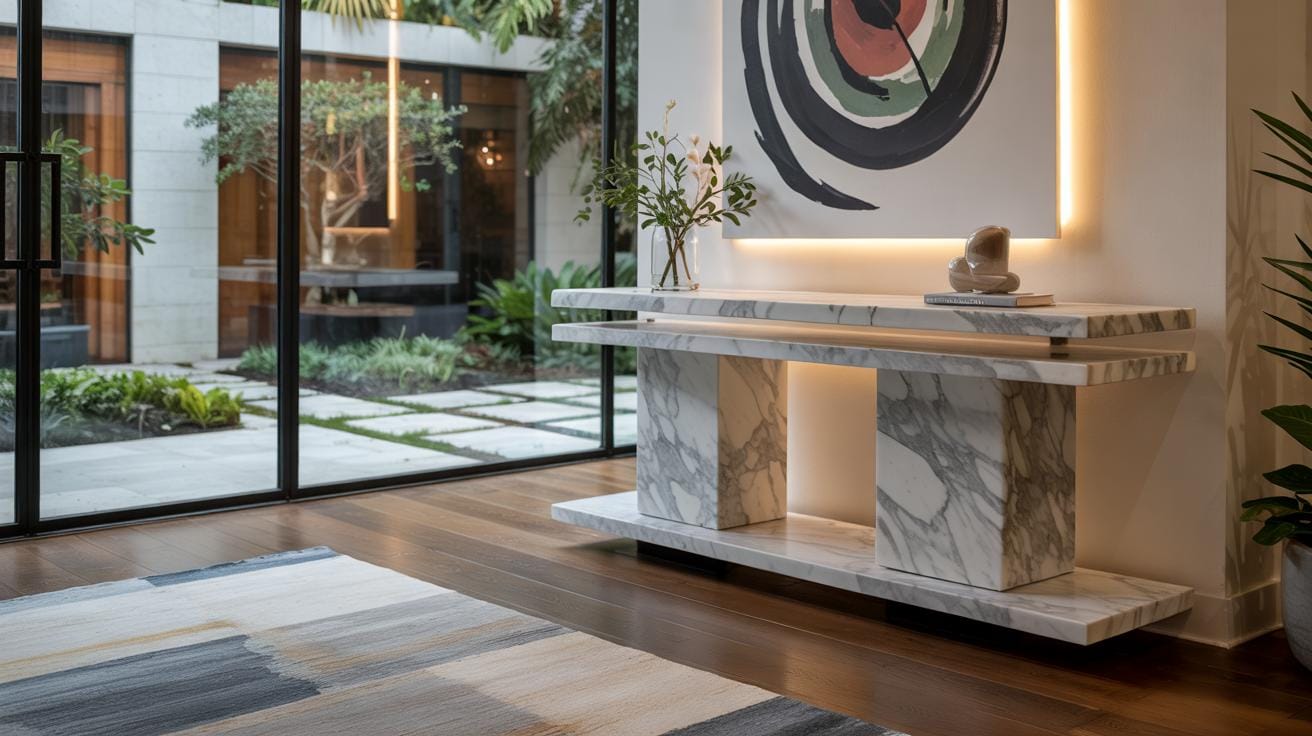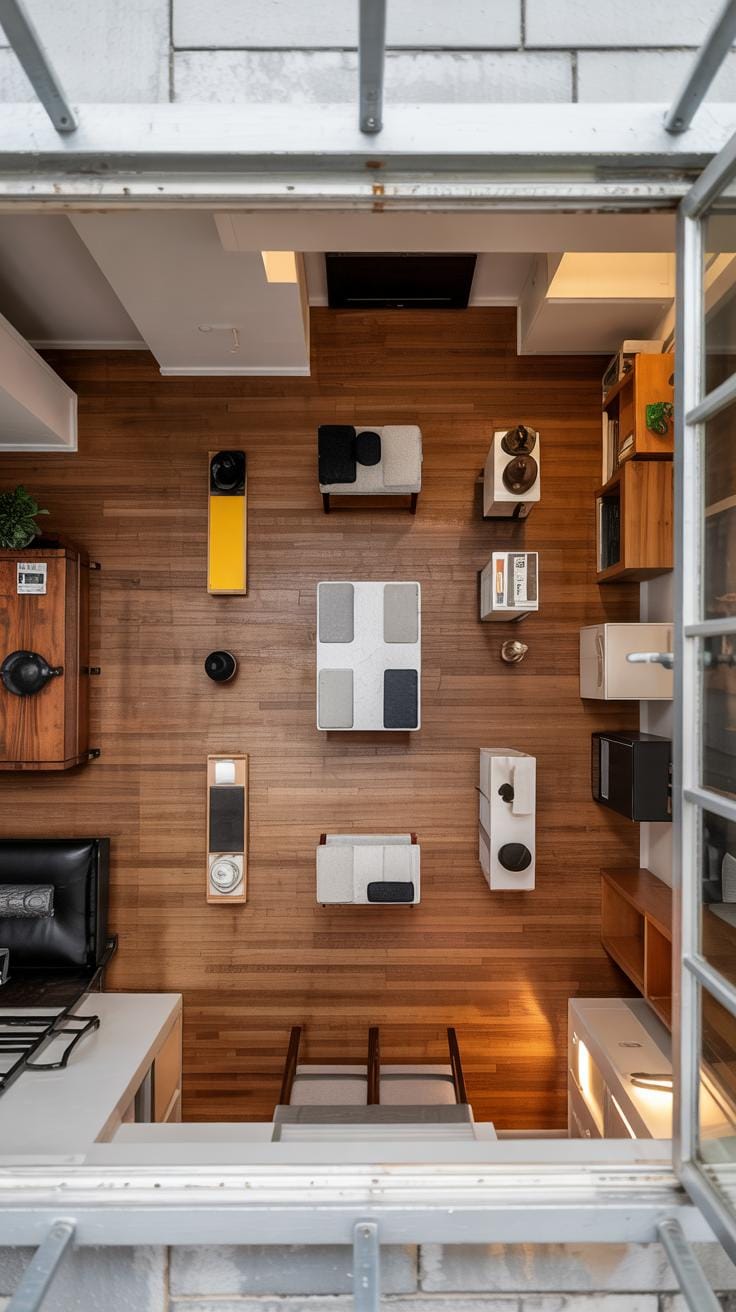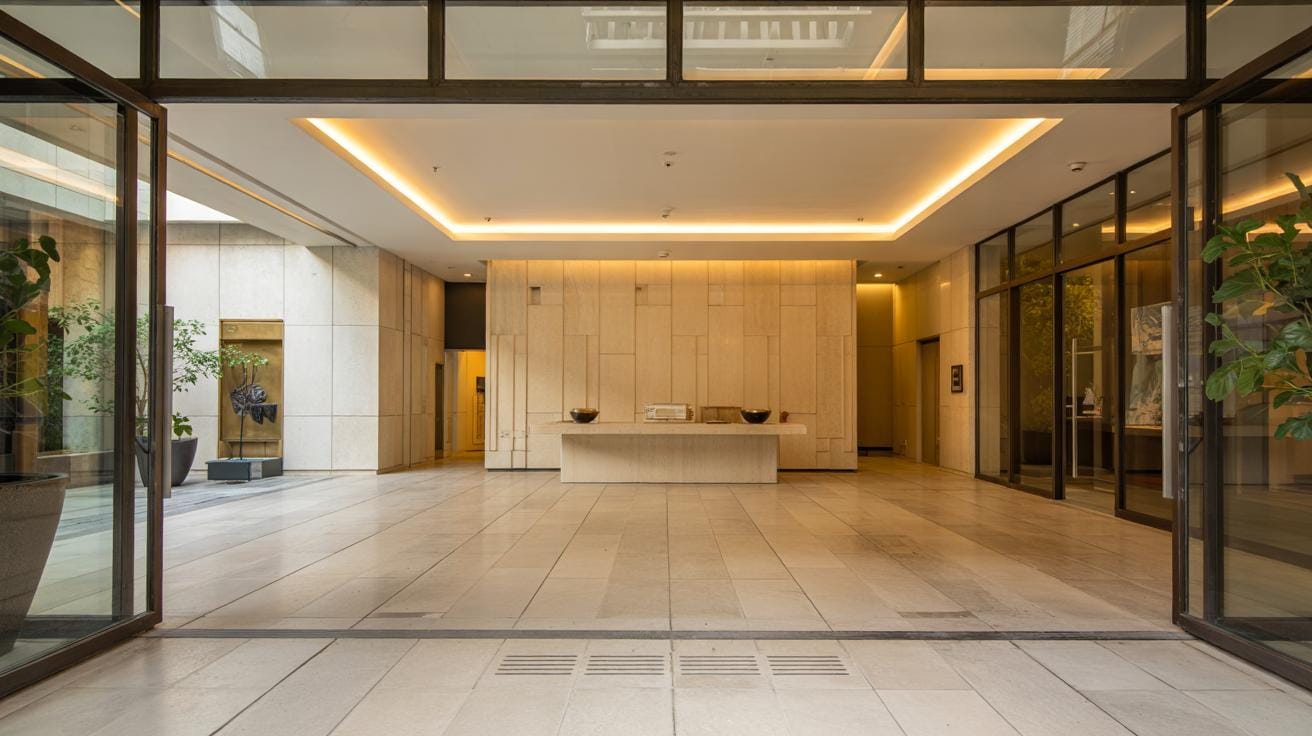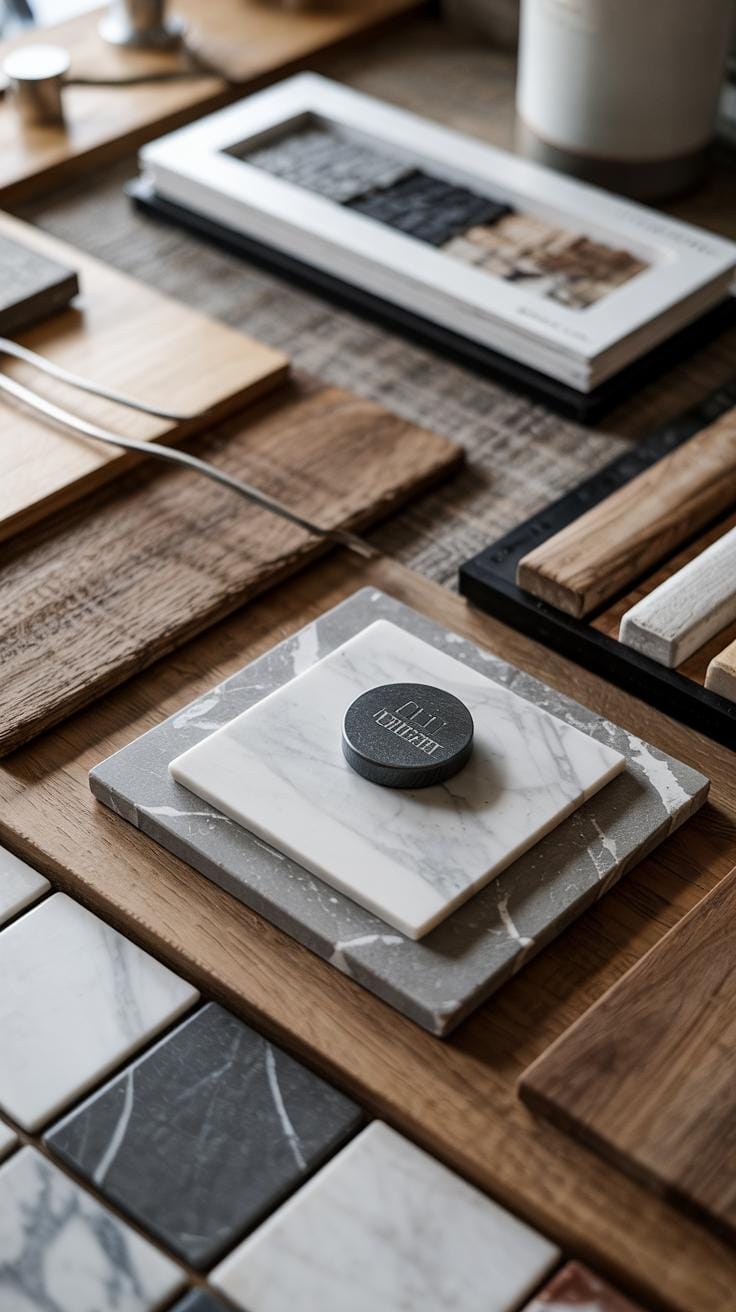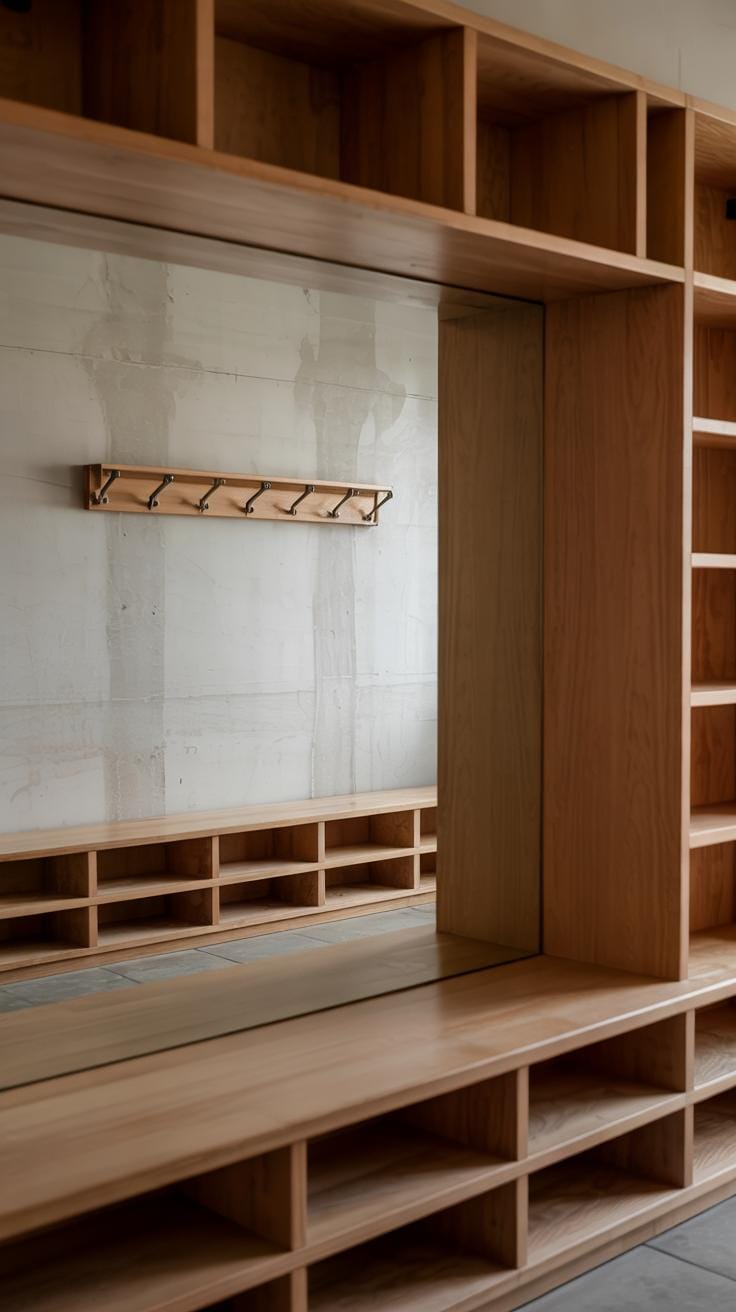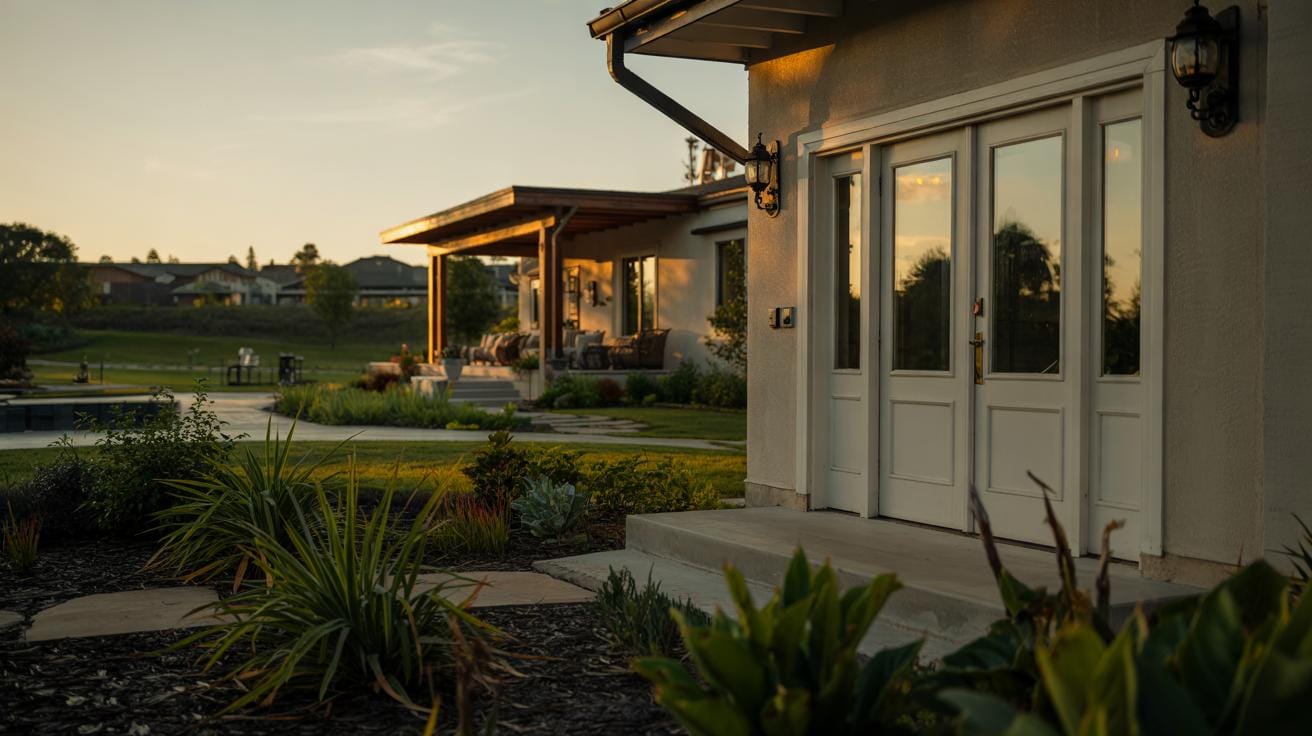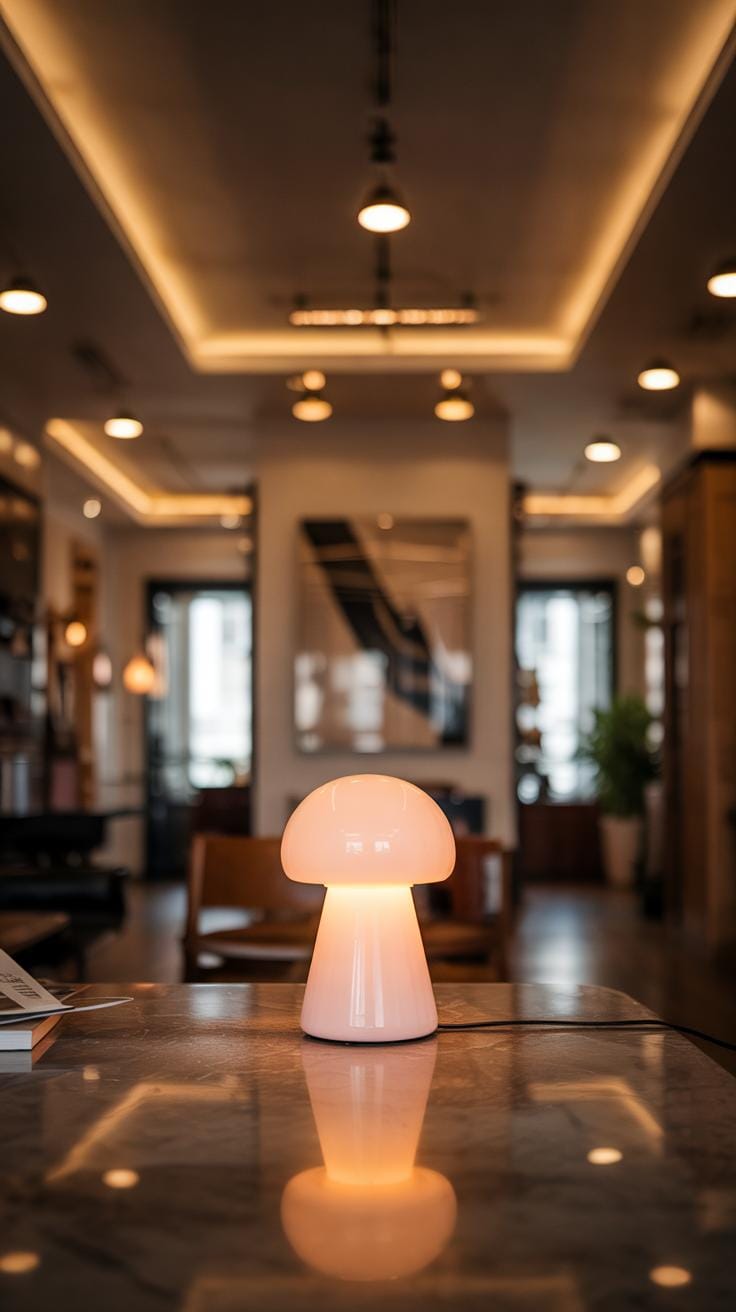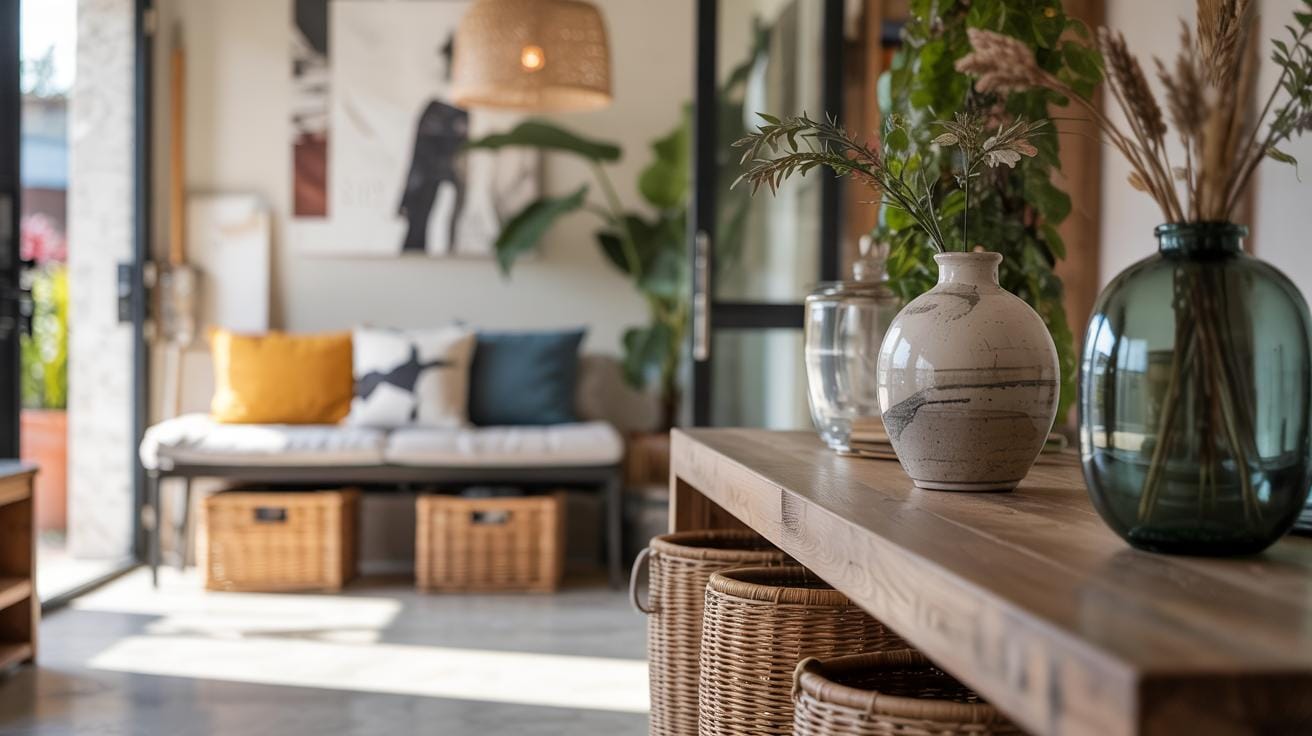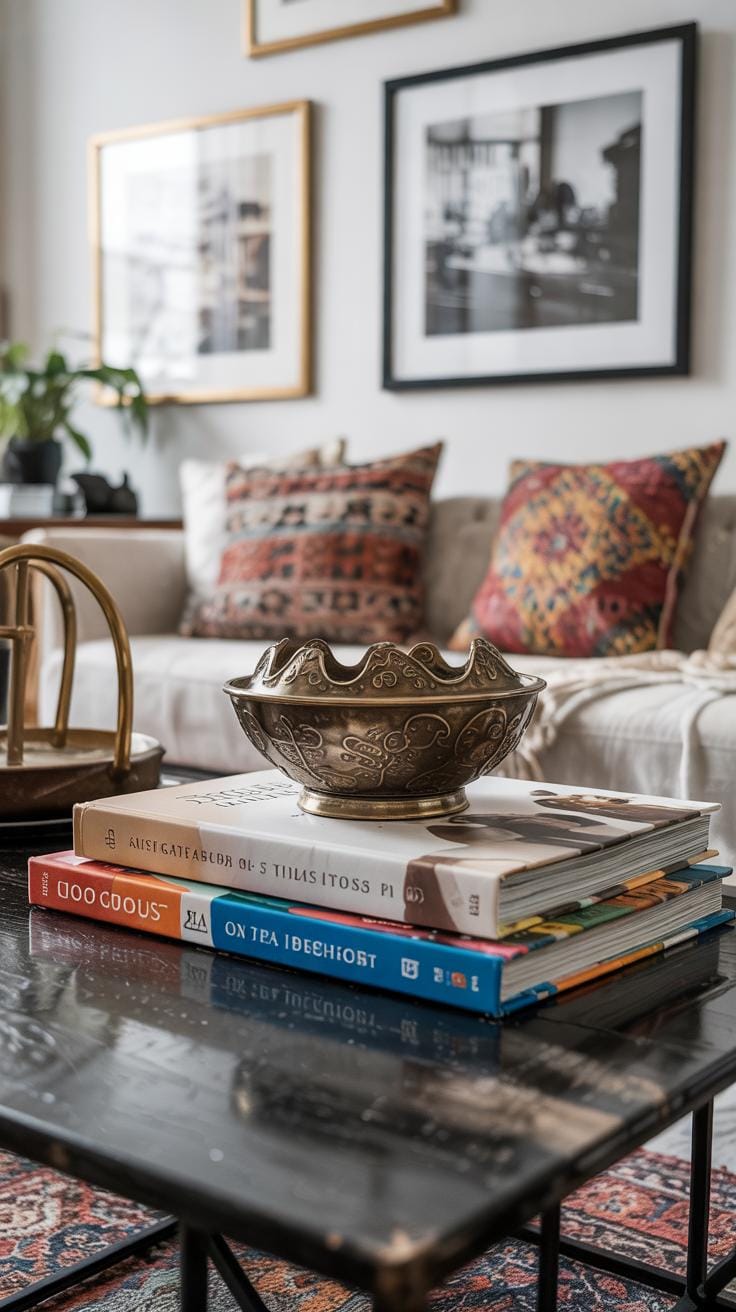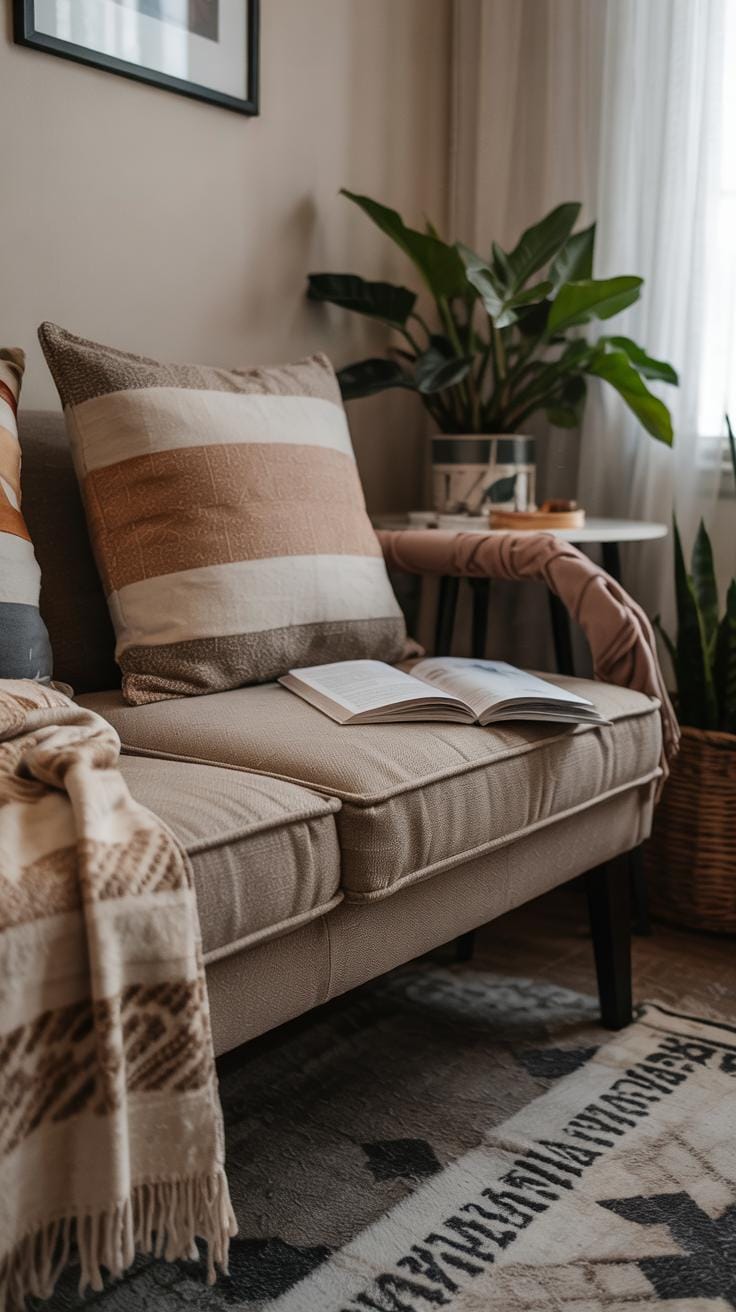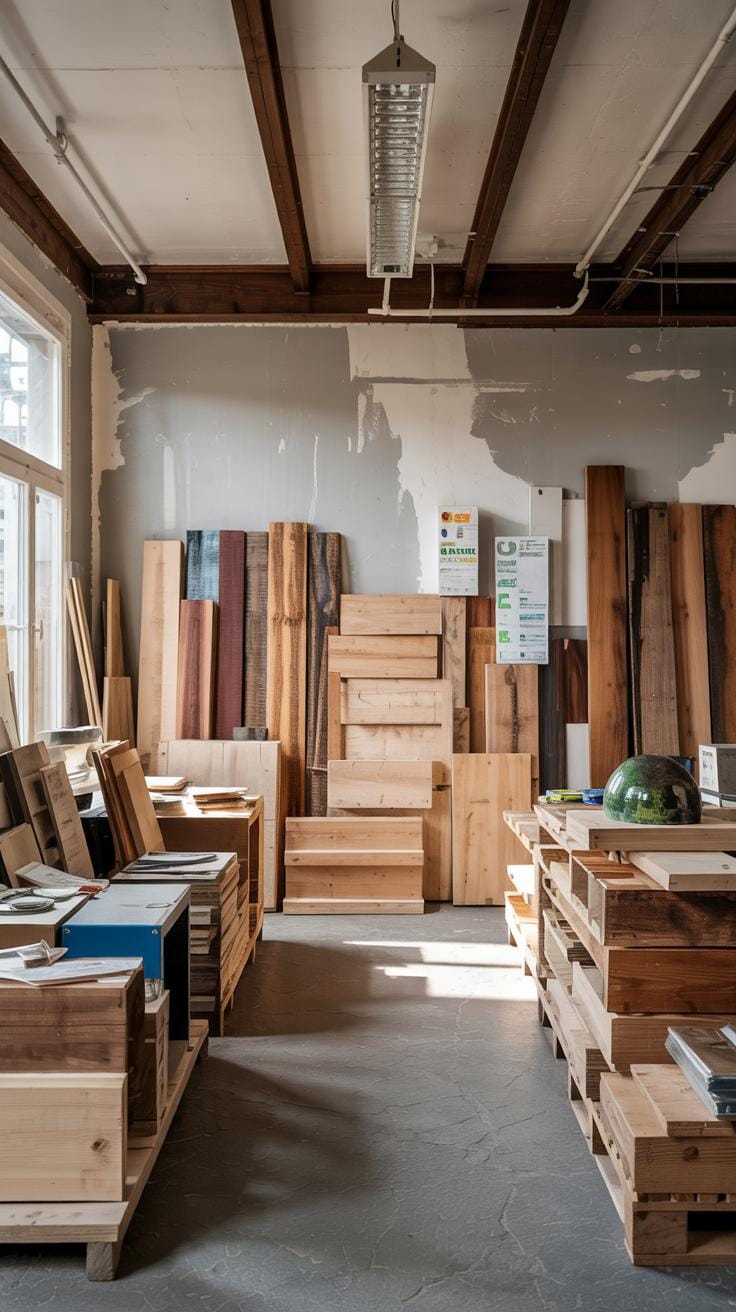Introduction
Your home’s entryway speaks before you do. A thoughtfully designed foyer can set the tone for the entire house. Many people overlook this space, but it offers great potential to impress guests and make your daily comings and goings easier. Enhancing your foyer does not require a full renovation. Simple changes can transform its appearance and function.
In this article, you will find practical ideas to inspire your entryway makeover. From layout adjustments to clever decoration tips, each suggestion focuses on maximizing the space’s usability and appeal. You will learn how to balance style and function to create a foyer that welcomes you and your visitors with warmth and charm.
Understanding the Purpose of Your Foyer
A foyer serves as the space between the outside world and your home’s interior. It acts as a bridge where visitors pause before entering your living area. This space is where you greet guests and offer a first glimpse of your home’s style.
Your foyer also meets daily needs. It stores coats, shoes, and bags while keeping your home organized. A well-made foyer balances style and function. It invites guests while giving you a practical spot to handle day-to-day routines.
Think about how your foyer fits your lifestyle. Is it easy to move through? Does it reflect your taste and meet your storage needs? When designed thoughtfully, the foyer welcomes others and supports your everyday habits without feeling cluttered or empty.
Why Design Matters in Your Entryway
Your foyer shapes first impressions. A cluttered or dull foyer can give guests a poor view of your home. It may feel cramped or uninviting, making people hesitate to enter.
In contrast, a clean and organized entryway creates a positive mood. A stylish foyer sets expectations for a well-kept home. For example, a foyer with neat shoe racks and pleasant lighting feels welcoming and shows attention to detail.
Ask yourself, what do visitors see when they step inside? Does your foyer make them feel comfortable or rushed? Improving this space can boost the overall atmosphere and energy of your entire home.
How Your Lifestyle Affects Foyer Needs
Your daily habits directly impact what your foyer requires. Large families often need more storage for shoes and coats. If you host parties, you might want extra seating or a clear path for guests.
Small households might prefer a minimalist foyer that stays open and simple. Traffic flow is another critical factor. Your foyer should allow easy access without obstacles, especially if kids or pets run through it.
Look at your current foyer. What annoys you? What tools or furniture could better suit your routine? Personalizing this space to fit your life improves both convenience and comfort every day.
Planning Your Foyer Layout for Functionality
Assess your entryway space carefully before adding anything. Measure the width and length to understand how much room you have to work with. Think about how people move through the area and where the door swings to avoid blocking paths.
Identify key zones: one for storage like shoes and coats, one for seating to put on or take off shoes, and one for decorative elements to make a good first impression. You don’t need all zones to be large, but each should serve a clear purpose.
Ask yourself what you use most when entering or leaving your home. Is it grabbing keys, hanging up coats, or sitting down quickly? Use these insights to place essentials where they are most accessible. The goal is to balance style with daily practicality without cluttering the space.
Choosing the Right Placement for Furniture
Select furniture that fits your foyer’s size and shape. Larger pieces can overwhelm a small entryway and make it feel cramped. Small benches with storage underneath offer seating and keep shoes or bags tidy.
Coat racks free up floor space while keeping jackets organized and easy to reach. Small tables placed near the door serve as a spot to drop keys or mail. Think about items that multitask to save space and avoid overcrowding.
Try to arrange furniture so it complements traffic flow rather than blocks it. Avoid placing anything that forces you to step aside awkwardly. How much furniture do you really need to keep your space functional and inviting?
Optimizing Traffic Flow
Keep main pathways clear and wide enough for easy movement. Store frequently used items like coats and shoes close to the door to grab them quickly. Less-used things should have a place away from the direct path to reduce clutter.
Consider angles and distance between pieces to avoid bumping into furniture. A well-organized foyer lets people enter and exit smoothly without tripping over bags or shoes left in the way.
Ask if the layout makes it simple to walk in with groceries or kids. Could you move freely while carrying items or opening doors? Clear, functional traffic flow ensures your foyer works well for all daily routines.
Selecting Materials and Surfaces That Work
Choosing the right materials for your entryway shapes the space’s function and style. Flooring must stand up to heavy foot traffic and dirt while staying easy to clean. Walls need protection from scuffs without sacrificing design. Furniture materials should complement the home’s overall look but hold up to daily use.
Consider how each surface feels underfoot and how simple it is to maintain. Will your flooring resist stains after a rainy day? Can your wall finish handle a quick wipe-down? Ask yourself what style fits your home. A modern concept may call for sleek surfaces, while a cozy interior suits natural textures. Match materials with these priorities for a foyer you’ll enjoy every day.
Durable Flooring Options
Tile ranks high for toughness and water resistance. It handles mud, snow, and spills with ease but may feel cold without a rug. Hardwood adds warmth and timeless beauty. Choose durable finishes like oak or maple to reduce wear and scratches. Keep in mind that hardwood needs more care to avoid water damage.
Laminate offers a budget-friendly option with good durability. It mimics wood or stone looks and cleans quickly. However, avoid laminate if water often sits on your floor since it can swell. Ask yourself: How much traffic will the floor see? What weather patterns affect your entryway daily? These answers help you decide the best fit.
Wall Treatments for Style and Protection
Pick paint colors that stay fresh and resist marks. Satin or semi-gloss finishes work well because they wipe clean better than flat paint. Light neutral tones brighten the space while hiding minor smudges. Wallpaper adds personality but choose washable options with subtle patterns to avoid overwhelming a small area.
Wainscoting offers both style and protection by covering lower walls. Wood or vinyl panels shield against bumps and can fit many design themes. Think about how often people brush past your walls. Would adding a chair rail or durable wall panels reduce scuffs? Selecting practical wall treatments maintains your entry’s neat appearance as guests come and go.
Incorporating Storage Solutions
Keeping your foyer organized helps maintain a neat and welcoming entrance. Storage solutions should fit the size of your entryway and blend in with the overall decor. Avoid bulky items that crowd the space; instead, choose furniture or fixtures that balance function and style.
Think about what items you need quick access to daily, such as shoes, coats, or bags. Having a spot for each item reduces clutter and makes your entryway easier to maintain. Practical storage does not mean sacrificing design—matching your storage choices with your home’s style creates a cohesive look.
How much storage do you actually need? Sometimes less is more when it comes to preserving open and inviting areas. The right combination of accessible and concealed storage will keep your foyer tidy and stylish at the same time.
Built-in vs. Freestanding Storage
Built-in storage fits perfectly into your foyer’s layout. It maximizes space and creates a custom look that blends with walls and trim. Shelves, cabinets, or benches set into the entryway keep floors clear and reduce visual clutter.
Freestanding units let you change the arrangement easily. They work well if you want flexibility or if your entryway dimensions vary. You can pick statement pieces like a tall wardrobe or a compact shoe cabinet that add character while holding essentials.
Which suits your lifestyle? If you appreciate a clean, integrated look, built-ins may serve better. If you like to redecorate often or need a quick move, freestanding furniture offers more versatility and personalization.
Clever Storage Ideas
Hooks and wall-mounted racks create vertical storage that frees up floor space. Install a few sturdy hooks at different heights for coats, bags, or hats within easy reach.
Baskets add style and function. Use them under benches or on shelves to hide shoes or smaller items. They bring texture and can be labeled to keep things orderly.
Multi-purpose furniture, like benches with internal storage or console tables with drawers, offer seating and hidden space at once. These pieces fit nicely in smaller entryways without overcrowding.
What combination of these options works for you? Mixing different storage types adapts to changing needs and keeps your entryway both neat and welcoming.
Lighting Choices That Enhance Ambiance
Lighting shapes how your foyer feels and how easily you can move through it. Good lighting boosts safety and makes guests feel welcome the moment they step inside. Think about combining lights that brighten the space with ones that add personality. Using lighting designed for both function and style helps avoid shadows and creates an inviting look.
Try installing a central ceiling fixture for general light, then add wall sconces or a table lamp to soften the mood. You could pick a chandelier that also acts as an eye-catching element. How do you want visitors to feel as soon as they enter? Bright and energetic or calm and cozy? Your lighting sets the tone and highlights your entryway’s best features.
Types of Lighting Fixtures
Ceiling lights provide broad, even illumination. A flush mount or a small chandelier works well if your foyer has low or high ceilings. Wall sconces help fill dark corners and add visual interest at eye level. Lamps on a console table offer focused light and a spot to pause before leaving. Using several light sources creates layers of light and prevents harsh shadows.
Layered lighting also adds depth and dimension to your entryway. You can adjust the mood depending on the time of day by turning on or off certain lights. What would work best for your foyer’s size and layout? Combining ceiling lights, sconces, and table lamps helps balance function and design.
Choosing the Right Light Temperature
Choosing the right light temperature affects how comfortable and welcoming your foyer feels. Warm light bulbs, around 2700K, give off a soft, inviting glow. They work well to create a cozy atmosphere without making the space too dim. Neutral white bulbs, near 3000K, produce clear, natural light that shows off colors better.
Avoid cool, blue-tinted lights because they can feel harsh and unwelcoming. Look for bulbs labeled “warm white” or “soft white” when buying. Would you prefer a calm, relaxing entrance or one with clear, vibrant light? Your choice sets the mood and impacts the overall experience of your entryway.
Adding Decorative Elements for Character
Personalizing your foyer makes a strong first impression. Choosing the right art, mirrors, rugs, and plants helps give your entryway character. Think about how each item serves a purpose and fits the overall style.
Balance is key. Avoid placing too many items that compete for attention. For example, a well-chosen rug can anchor the space and define a path without overwhelming. Select a few striking pieces that express your taste rather than filling every surface.
Plants add life and soften hard edges. A medium-sized potted plant near the door draws the eye and creates a welcoming feel. Choose low-maintenance greenery if sunlight is limited. Art and mirrors can also reflect your personality while staying functional.
Ask yourself, which pieces will you see daily and enjoy? Which will guests notice and remember? Keep your decor purposeful to make your foyer inviting without cluttered distractions.
Using Mirrors to Create Space
Mirrors make small foyers appear larger by reflecting light and opening sightlines. Placing a mirror opposite a window or light source doubles brightness and creates a sense of depth.
Consider a tall, narrow mirror next to the door to reflect the hallway. Round or geometric shapes add visual interest without dominating the space. Frameless or thin-framed mirrors work well in modern designs, while ornate frames suit classic looks.
Hang mirrors at eye level so you and guests can check appearances before leaving. Leaning a large mirror against the wall offers a relaxed feel and flexibility in arrangement.
Where could a mirror improve the light and flow of your entryway? Test placements temporarily before committing to nails or hooks.
Selecting Art and Accessories
Choose art that complements your foyer’s size and style without crowding. A single large piece can create a focal point, while a small gallery wall works well in wider spaces.
Keep color schemes in mind. Artwork that ties in with your rug or furniture brings harmony. Avoid pieces with overly busy patterns that clash or distract.
Accessories like bowls, trays, or sculptures add interest but should serve a function: holding keys, mail, or seasonal items. This keeps the space tidy and purposeful.
Does your art evoke emotions or spark conversations? Select items that feel meaningful rather than filling space. Your entryway sets the tone—let your choices reflect who you are without overwhelming the eye.
Integrating Seating and Comfort
Seating in your foyer offers both function and comfort. It gives you a spot to sit while putting on or taking off shoes. Having a place to rest briefly after coming home makes the entryway more welcoming. You might pause to collect your thoughts or organize your belongings before heading inside.
Comfortable seating also invites guests to feel at ease from the moment they step in. It supports smooth transitions between outside and inside spaces. Have you noticed how a bench or chair changes the feel of a room, encouraging people to relax and stay a moment longer?
Choosing seating that is easy to clean and durable fits the busy nature of an entryway. Avoid pieces that require too much upkeep or take up too much space. Think about how the seating will get used every day and pick options that blend style with practicality.
Choosing Functional Seating
Benches work well because they can seat multiple people and often offer storage underneath. Stools fit in tight spaces and are easy to move around as needed. Chairs add a touch of style but need to match your foyer’s size to avoid overcrowding.
Look for seating that includes hidden storage. Drawers or compartments help keep shoes, gloves, or scarves organized. A bench with storage baskets underneath keeps clutter out of sight while still close at hand. What benefits could you gain by combining seating with storage in your entryway?
Select options in durable materials like wood, metal, or weather-resistant fabrics. This keeps the piece looking fresh despite daily use. Choose clean lines and simple shapes for a timeless look that adapts with your decor.
Enhancing Seating Comfort
Add cushions or throws to make your seating cozier. Choose cushions with removable covers so you can wash them easily. This helps maintain cleanliness in a high-traffic area. Soft fabrics in neutral shades keep the look calm and inviting while allowing you to add seasonal pops of color.
Throws offer warmth and a chance to introduce texture without permanent changes. A lightweight throw draped over a bench invites guests to curl up during colder months. Can you imagine your guests appreciating a warm, comfortable spot as soon as they arrive?
Keep comfort simple and practical. Avoid bulky padding that is hard to clean or disrupts your foyer’s flow. Small touches like these balance style and usability, making the entryway an area you and your guests enjoy using every day.
Maintaining Your Foyer to Keep It Impressive
Your foyer sets the tone for the rest of your home, so keeping it tidy and attractive matters. Small daily habits make a big difference in preventing clutter and maintaining a welcoming space. Devote a few minutes each day to straighten shoes and hang coats. Wipe down surfaces to remove dust or fingerprints. These simple actions help you avoid buildup and keep your entryway ready for visitors at any time.
Deep cleaning on a regular schedule ensures details don’t go unnoticed. Cleaning rugs, polishing fixtures, and checking lighting can revive your foyer’s appearance. Think about how your space feels during different seasons and arrange upgrades accordingly. How often do you notice your foyer needing a refresh? Creating a maintenance routine tailored to your lifestyle keeps your entryway looking as inviting as the day you transformed it.
Daily Organization Habits
Establishing consistent routines makes daily upkeep easier. When you enter your home, remove shoes right away and place them in an organized rack or basket. Hang coats, hats, and scarves on hooks to avoid piles on furniture or floors. Clear off counters and tables so your space feels open and clean. A quick scan at the end of the day can highlight anything out of place.
If you involve family members in these routines, the foyer stays clutter-free with less effort. Ask yourself: what simple step could you add to your daily habits to improve your foyer’s order? Consistency turns small actions into lasting habits that keep your entryway neat and stylish.
Seasonal Cleaning and Updates
Each season invites changes that can brighten your foyer without major work. Swap out rugs to match weather or style, such as a lighter runner in summer and a thicker mat in winter. Check light bulbs and replace dim or burnt-out ones to keep the area well-lit and welcoming.
Update your decor with seasonal accents like fresh flowers in spring or warm-toned pillows in fall. Changing small touches prevents your foyer from feeling stale and shows attention to detail. Reflect on the last time you refreshed this space – what seasonal update could you try next? Regular updates maintain a fresh look that impresses visitors all year round.
Considering Sustainable and CostEffective Solutions
Designing or updating your foyer doesn’t have to drain your budget or harm the environment. Choosing eco-friendly materials gives your entryway a fresh, responsible look. You can create a stylish space that feels good for both your home and the planet. How can you balance cost and sustainability while achieving that wow factor?
Start by thinking about materials that last and come from renewable or recycled sources. Focus on options that combine durability and style without overwhelming your wallet. A thoughtful approach to sourcing and making your choices goes a long way. Reducing waste and investing in smarter products often saves money over time.
Can you apply creativity to repurpose items you already own? Upcycling furniture or finding secondhand gems can transform your entryway without high expenses. With a bit of effort, practical design changes can impress any guest instantly while staying budget-friendly and eco-conscious.
Choosing Sustainable Materials
Reclaimed wood brings warmth and character to your foyer. It’s sturdy and carries a story, giving your space unique charm. Low-VOC paints improve air quality, reducing harmful fumes that can linger indoors. Look for brands that meet strict environmental standards.
Natural fiber rugs and cushions offer texture and comfort without synthetic chemicals. Options like jute, sisal, or organic cotton are easy to clean and biodegradable. These textiles age well and add a subtle earthiness to your design.
Would you consider swapping plastic or vinyl for these natural choices to boost longevity and eco-friendliness? Small tweaks in your material choices impact your foyer’s overall health and appearance, making your entryway both stylish and kind to the environment.
Affordable Makeover Ideas
Tackling your foyer update on a budget can be both fun and rewarding. DIY projects like painting an old console table or crafting a simple mirror frame personalize the space and reduce costs. Check local thrift stores for unique items that fit your style but don’t break the bank.
Repurposing existing furniture saves money and cuts down on waste. Turn a worn-out bench into a new seating nook with fresh cushions made from leftover fabrics. Use leftover paint to create bold stripes or patterns on your walls for a fresh look without buying wallpaper.
What’s one unused item in your home that could find new life in your foyer? Flexible ideas like these help you design a welcoming entryway that impresses, all while keeping expenses in check and supporting sustainable practices.
Conclusions
Reviewing your foyer design urges you to consider how this space reflects your home’s personality. Prioritize organization to keep the area neat and inviting. Incorporate elements that fit your lifestyle and preferences. Thoughtful lighting, meaningful decoration, and practical furniture choices all contribute to an entryway that feels comfortable and impressive.
Taking action to improve your foyer may also inspire improvements in the rest of your home. Use the ideas here as a starting point for your transformation. With care and attention, your entryway will become a place you look forward to entering each day, leaving a lasting positive impression on anyone who steps inside.




